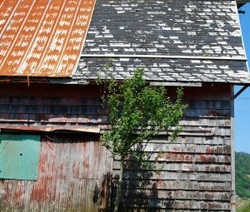
Pestec has long been recommending termite control in Sydney for 12 years now. All Pestec technicians are licenced to render termite control and are very highly skilled at giving a variety of preventative termite control measures. Termite control in Sydney comes with many varieties as the landscape varies greatly from village to suburb as does the soil type and construction methods of homes.
Soil types produce a big distinction when addressing termites as some pesticides have very brief life coverage in high alkaline soils while some don't mix immediately to silica (sand). The significantly diverse landscape of Sydney has a bearing on the place where termites stay and where they will travel. Structure types of houses in Sydney can make termite control quite challenging. A number of homes are designed with hard to reach voids underneath them, not only does this enables significant moist tiny entry ways for termites but the termites (and voids) have the probability of hardly being found right until they bring on great damage to the house.
Soil types produce a big distinction when addressing termites as some pesticides have very brief life coverage in high alkaline soils while some don't mix immediately to silica (sand). The significantly diverse landscape of Sydney has a bearing on the place where termites stay and where they will travel. Structure types of houses in Sydney can make termite control quite challenging. A number of homes are designed with hard to reach voids underneath them, not only does this enables significant moist tiny entry ways for termites but the termites (and voids) have the probability of hardly being found right until they bring on great damage to the house.
Pestec does numerous treatments to houses every year, the actual procedure made relies on what types of termite has been discovered infesting the home plus considering the above mentined conditions.
The major forms of procedure that are utilized for Termite control in Sydney are Baiting, Dusting and chemical soil treatments.
Baiting is an operation that is conducted by affixing feeding stations to a zone where termites have been discovered to be active, the termites see the trap more palatable and less difficult to take in than timber and swiftly transfer to feeding on the bait. The poison in the bait is in reduced amounts so the termites don't notice it is there. Termites run in a communal system where food is mutual amongst the entire colony so ultimately all termites in the colony will be stricken by the bait and the colony altogether dies.
Dusting is a method of termite colony treatment where a finely ground insecticidal dust is very cautiously inserted to the termite operation using a hand bulb puffer which aid the dust to be applied over the workings. When termites come into contact with the dust they unintentionally carry it through the channels back into the central nesting area, as the termite travels he is being repeatedly groomed by other termites who by themselves inadvertently pick up pieces of the dust and can impair further termites they meet. If there is an issue with dusting it is that it can't be implemented with success only if many termites come into contact with it. At times this will call for the removal of wall linings, carpets, etc. to find the numbers of termites required.
Resource:
www.pestec.com.au/termite-control- website on how to get rid of termites.
The major forms of procedure that are utilized for Termite control in Sydney are Baiting, Dusting and chemical soil treatments.
Baiting is an operation that is conducted by affixing feeding stations to a zone where termites have been discovered to be active, the termites see the trap more palatable and less difficult to take in than timber and swiftly transfer to feeding on the bait. The poison in the bait is in reduced amounts so the termites don't notice it is there. Termites run in a communal system where food is mutual amongst the entire colony so ultimately all termites in the colony will be stricken by the bait and the colony altogether dies.
Dusting is a method of termite colony treatment where a finely ground insecticidal dust is very cautiously inserted to the termite operation using a hand bulb puffer which aid the dust to be applied over the workings. When termites come into contact with the dust they unintentionally carry it through the channels back into the central nesting area, as the termite travels he is being repeatedly groomed by other termites who by themselves inadvertently pick up pieces of the dust and can impair further termites they meet. If there is an issue with dusting it is that it can't be implemented with success only if many termites come into contact with it. At times this will call for the removal of wall linings, carpets, etc. to find the numbers of termites required.
Resource:
www.pestec.com.au/termite-control- website on how to get rid of termites.
